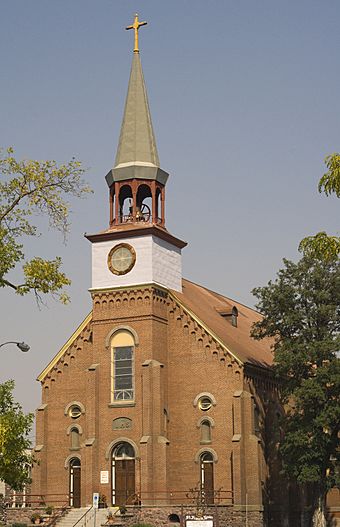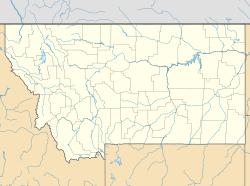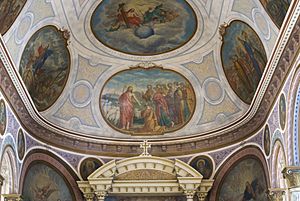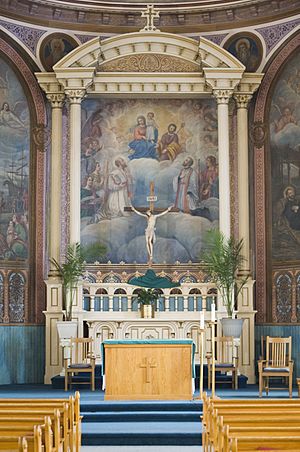St. Francis Xavier Church (Missoula, Montana) facts for kids
Quick facts for kids |
|
|
St. Francis Xavier Church
|
|

St. Francis Xavier Church at 420 W. Pine St., Missoula, MT
|
|
| Location | 420 West Pine Street, Missoula, Montana 46.8749,-113.9977 |
|---|---|
| Area | 0.5 acres (0.20 ha) |
| Built | 1892 |
| Architect | Mr. Blanchard of Portland, Oregon; construction overseen by Patrick H. Walsh |
| Architectural style | Romanesque |
| NRHP reference No. | 82003176 |
| Added to NRHP | April 28, 1982 |
The St. Francis Xavier Church is a very tall and beautiful church located in downtown Missoula, Montana. It stands out as the tallest church in Missoula and even in Missoula County, Montana. This historic building is famous for its amazing paintings, which are more than 100 years old! A special artist, who was a kitchen helper and a brother of the Society of Jesus (also known as Jesuits), created these artworks in his free time. You can find this impressive church at 420 West Pine Street.
Contents
Discovering St. Francis Xavier Church
St. Francis Xavier Church was built in 1892. It is one of the tallest churches in the entire state of Montana. It is also the tallest church in the city of Missoula and in Missoula County.
How the Church Was Built
The first St. Francis Xavier Church was built by a group called the Jesuits in 1881. Later, in 1888, a Jesuit Priest named Father Diomedi arrived. He hired an architect named Mr. Blanchard from Portland, Oregon. A local builder from Missoula, Montana, named Patrick Walsh, also helped.
The church was designed to be very large. It could hold 600 people on the main floor. Another 150 people could sit in the choir loft. This made it a very important gathering place for the community.
Unique Design and Art
When the church was finished in 1892, it became the biggest church in Montana. It has a special shape called "cruciform," which means it looks like a cross from above. Its style is called Romanesque Revival. This means it uses ideas from old Roman buildings.
You can see semicircular arches above the windows and doors. There are also smaller arches along the roofline. The church has small buttresses, which are supports on the outside walls. It also has a tall bell tower.
Inside, the church is filled with beautiful art. A Jesuit lay brother named Joseph Carignano (1853–1919) painted the frescoes. Frescoes are paintings done on wet plaster. Joseph Carignano also painted frescoes at the St. Ignatius Mission. The church also has colorful stained glass windows. There is a large pipe organ, too. A very heavy church bell, weighing 2,270 pounds, is dedicated to another Jesuit missionary, Father Lawrence Palladino.
See Also
- List of Jesuit sites





